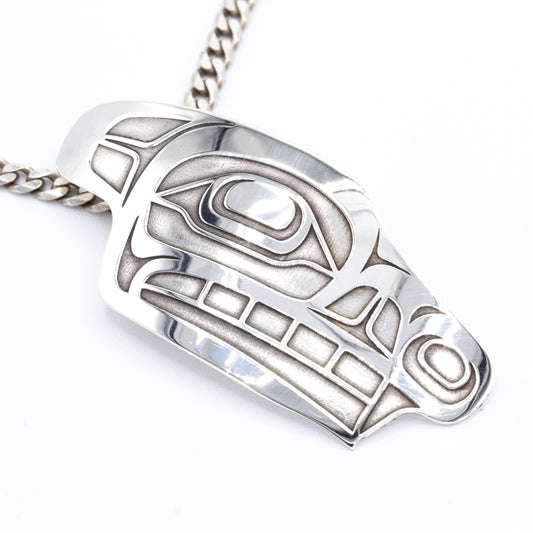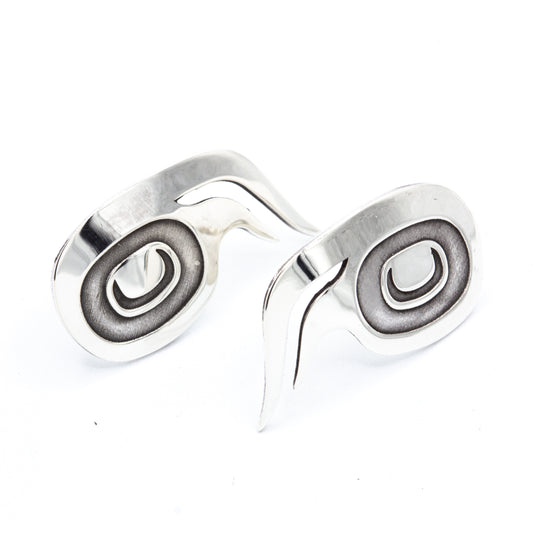Collection: The Wolf Symbol
The Wolf is respected for its strength, agility, intelligence and capacity for devotion. As their vocal range and communicative powers are impressive, Northwest Coast people celebrate the Wolf as an excellent communicator (Shearar). They are also fast and agile hunters which is why masks and figures portraying Wolf were popular among warrior groups (Dawkins).
Indigenous Significance of the Wolf Symbol
Some legends recount four Wolf cubs surviving the great flood by climbing to the peak of a high mountain. Once the waters receded, the Wolf cubs howled powerfully to identify themselves to any other survivors. In this instance, humans heard the cries of the young wolves and were welcomed into the community of humans (Shearar).
In other legends, the first Killer Whale is said to have surfaced after a Supernatural White Wolf entered the sea and transformed itself. Wolf and Killer Whale are known as intimate relations, exhibiting similar colourings, pack behaviours and hunting abilities (Shearar).
Wolf is a principal crest of many prominent Northwest Coast families. Among Tlingit, Wolf is an alternative to Eagle as the crest of one of the two main clans. Among most Tsimshian groups, Wolf is one of four main clans. Wolf Den and even Wolf Bath House appear as crests among far northern clans (Shearar).
Artistic Characteristics of the Wolf
In art, Wolf is usually depicted with a long snout; long sharp teeth with prominent fangs; tall, narrow ears; ovoid eyes; clawed feet; and a long, curled or bushy tail. Wolf may also feature an extended tongue, which often curls upward (Shearar). A supernatural figure, called Sea Wolf, is occasionally portrayed as a wolf with fins (Dawkins). This representation highlights the significant relationship that exists between Killer Whale and Wolf.




